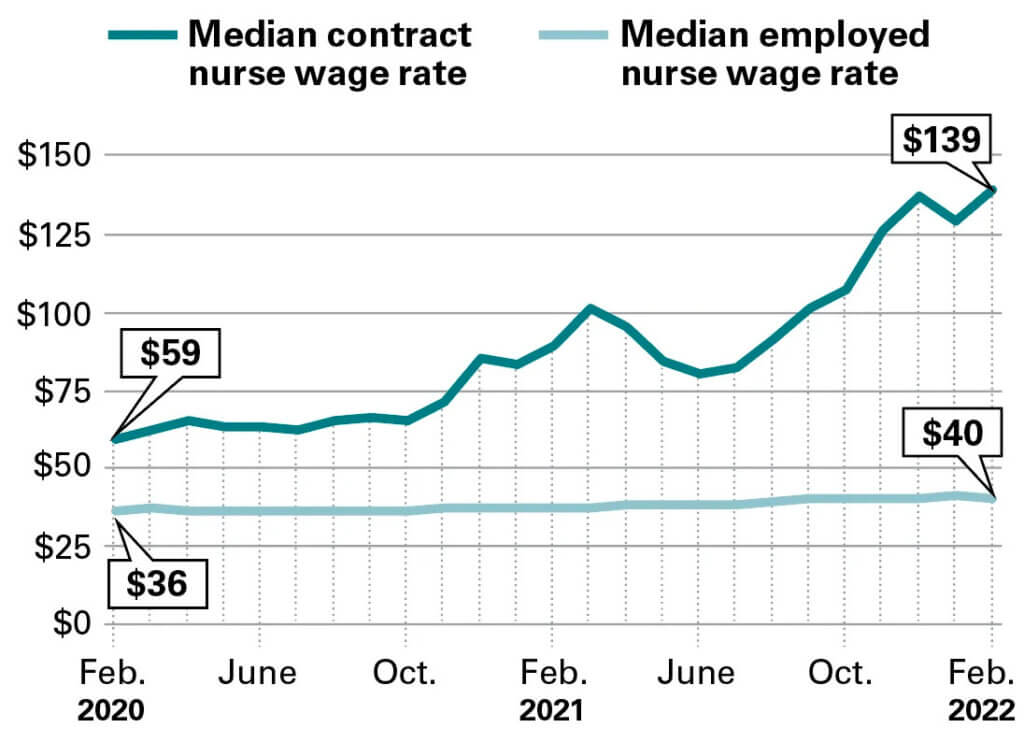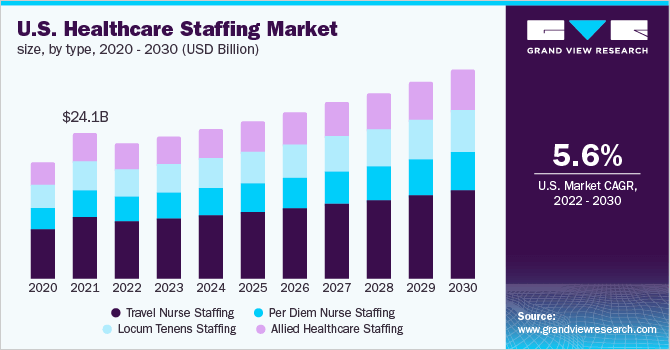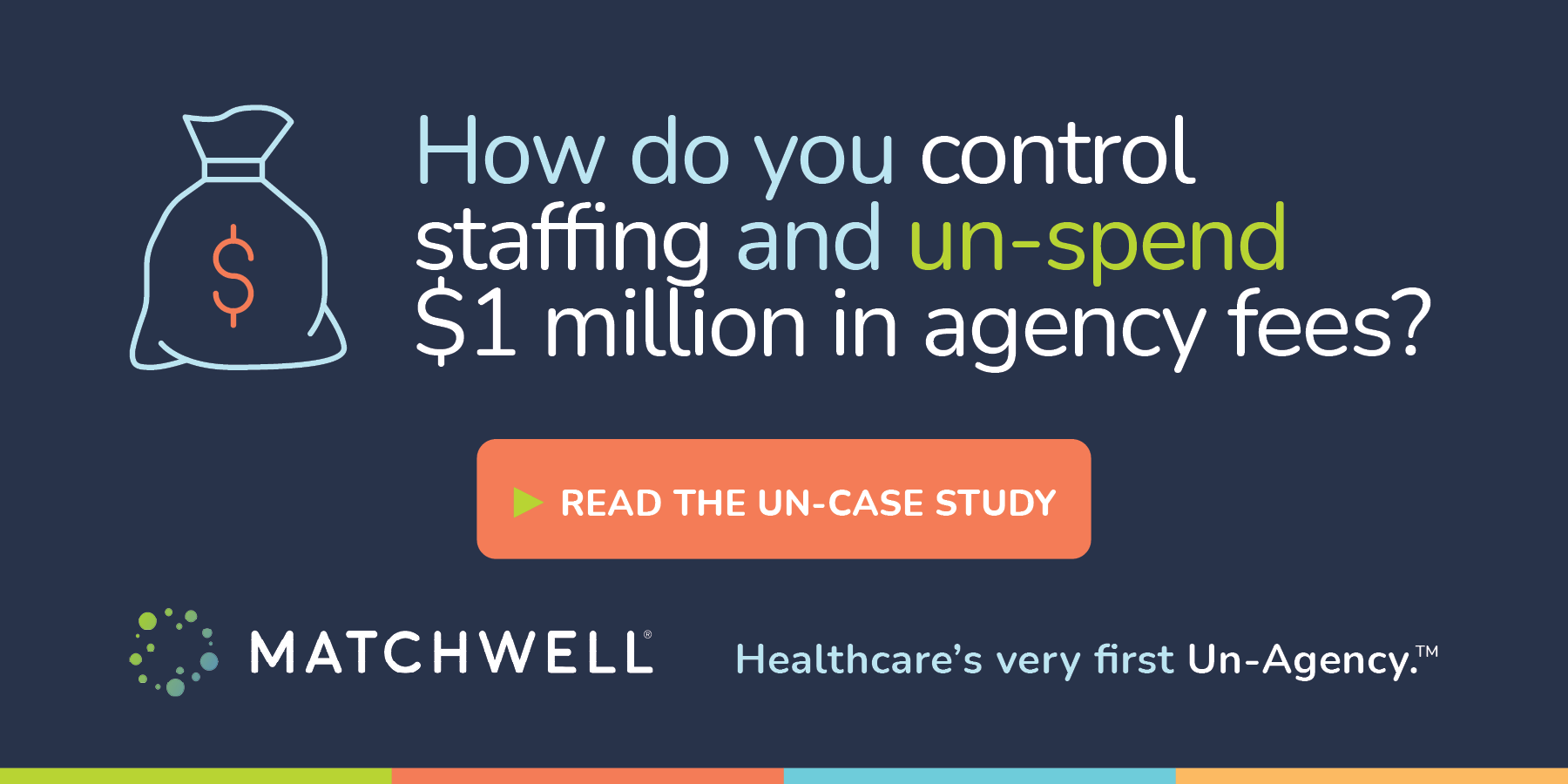Overcoming the challenges of building an internal agency program won’t be easy, and is more likely to fail due to these top 3 reasons.
In response to the healthcare staffing crisis and the increased bill rates seen from traditional staffing agencies, many healthcare systems have launched or are planning to launch their own in-house staffing programs. If this resonates with you, or your team is starting to consider an internal program, we share these words of caution: it won’t be as easy as you think. There are many factors that will most likely lead to failure; and here we share the top 3.
#1 – You Won’t Pay Enough
The fundamental problem with creating an internal staffing program is wage disparity. We already saw the resentment created from the surge in travel nurses making 2-3x or more than their internal staff peers. But at least administrators could justify that as outside costs needed to release the pressure on shift schedules. But if you’re going to compete with agencies, you’ll have to pay market wages to the clinicians in your internal staffing program. Imagine how much more resentment there will be when everyone is getting paid from the same company, unequally.
Outrage and emotion aside, the legal liability in regard to wage equity, or the lack thereof, can’t be discounted easily. Thankfully, we’re not lawyers, and we don’t need to figure out how wage classification and disparity laws will affect internal payroll. But we can tell you that pay equity laws in many states have strengthened in the past few years. Even if you have a separate job classification for your staff clinicians, if your internal program is still owned or managed by your healthcare system-and you’re using the same Employer of Record (EOR)-it can appear you have clinicians doing the same job in the same department but at potentially very different wages. In California for instance, the definition for a difference in pay has to be due to a bona fide factor such as education, training or experience, among other factors.
It’s a quagmire for sure. You need to pay competitively with the external market to attract clinicians BUT you also cannot pay too much more than your full time staff without creating another set of wage disparity issues. And worse, it might lead some organizations to consider trying to classify their internal staffing program clinicians as 1099 Independent Contractors (HINT: Just don’t do this! We’ll tell you why in an upcoming blog post.)
If your internal staffing program can’t pay competitive rates alongside the staffing agencies? That’s right, you’ll likely fail.

Median wage rate for contract nurses rose +135% from February 2020 to February 2022, while employed nurses saw little change. Source: Modern Healthcare, Kaufman Hall
#2 – You Don’t Have the Resources
If you read a lot of industry articles or even this blog, at first glance you might think we’re advocating against agencies. Agency, bad. Un-agency, good. Well it’s not that simple. Many of the leading agencies provide a valuable service and let’s face it, they provided patient care for our facilities over the past two years when we couldn’t do it ourselves. However, there are too many agencies out there that don’t provide the same level of service and take advantage of every opportunity to increase their margins instead of thinking of innovative ways to bring costs down.
But regardless of quality, agencies exist for a reason – they serve a key staffing need. You’re talking about an industry that has over 80 years of experience creating processes, systems, and technologies to make them efficient. They also have trained generations of workers to understand the nuances of staffing.
If you’re going to create your own staffing program, you’re going to have to properly resource your team with enough staffing-trained experts who can bring this experience to your team. And, well, if you want to lure top recruiters away from staffing agencies, you’ll have to pay a premium. On top of that, you’ll need quite a bit of technology; and integrating complex systems will cost time and money. Plus, the web engineers and data analysts needed to master and maintain your tech stack will not be cheap. And while your team is used to credentialing management and training; they’ve likely never onboarded at the scale and volume of an agency that is hiring travelers, local contracts, and flex PRN … all simultaneously.
Your internal staffing program is going to grow, and grow, and become a significant cost center of its own. In an era of watching budgets tightly, the increasing costs of building and supporting an internal staffing program could create pressure to add in your own staffing revenue in the form of the typical per hour agency markup to cover your expenses … thus repeating the same cycle you’re trying to replace. The wasted hourly markup expense might look different on a P&L, but the overall cost will still be there! Even if your organization has the foresight to see the long-term investment, efficiencies won’t happen overnight. In the end, you’re unlikely to save money fast enough to outpace the rising costs of this program, dooming it to fail.
#3 – Your Mindset is All Wrong
We have a Matchwell client who recently tried to use our clinician job-matching algorithm to fill its FTE positions. Our success team had to explain that the nurses we recruit on their behalf aren’t looking for full-time work, instead these workers want the flexibility of local contract work and per diem shifts. It’s hard to blame this client. They are so used to being controlled by agencies, they couldn’t help but get excited knowing Matchwell offers direct contact and no conversion fees, should a clinician want to work full time. But to us, this was a perfect example of the problem-too many healthcare organizations aren’t adapting to the macro trends in the workforce.
The third reason your in-house staffing program will likely fail, is that you won’t be able to resist the urge to fill your internal FTE positions first. There are some clinicians who use travel contracts and flexwork to test which roles, departments, facilities, organizations and teams they like working with most; before turning to full time work. But the fastest-growing segment of the workforce are those who do NOT want full-time work, period. These people instead are choosing work-life freedom. And this kind of liberation can’t be achieved when internal staff is being pressured into overtime and unwanted shifts.
According to Harvard Business Review, the biggest workforce trend is fairness and equity. And chief among that includes access to flexible work. Further, HBR says improving the employee experience in the future will be less about increasing wages than it will be about reducing work hours. They also note that our idea of traditional employee churn will morph, as hybrid and flexible work begins to overtake the full-time staff. In short, there’s a whole new world emerging, and it will be difficult for bureaucratic healthcare organizations to recognize and respond in real time.
HINT: Whatever you do, don’t let your organization just throw money at this problem, thus increasing the already $24 billion healthcare staffing market (especially with nurses and clinicians, who admittedly chose this vocation more for the purpose than the money).
Fear Not, Matchwell is on Your Side
If there wasn’t a solution that’s already spent years working on these problems and more for healthcare organizations just like yours, this article might be the most depressing blog we’ve ever posted. But fear not, Matchwell’s Un-agency approach is just what you need to:
- Pay fair wages (externally through our EOR) and save money, so you can compete with agencies
- Plug into or replace your internal program, ensuring savings get traction before costs overtake it
- Offer options for today’s modern workforce, creating flexibility and work-life harmony
Despite the warnings in this article, we’re all for empowering healthcare organizations just like yours to gain direct access to qualified clinicians. Unlike some traditional agencies that may have taken advantage of the crisis, we don’t want you to increase staffing costs. We think it’s unfair to stand between you and the clinician, and to take a cut for each hour worked. Bottom line, if you want to build an internal staffing program, we want to help you do it-period.
Just keep in mind, you are unlikely to succeed with an in-house staffing program if you can’t overcome some of these challenges. Luckily, Matchwell is just the tool you need to help you succeed!



